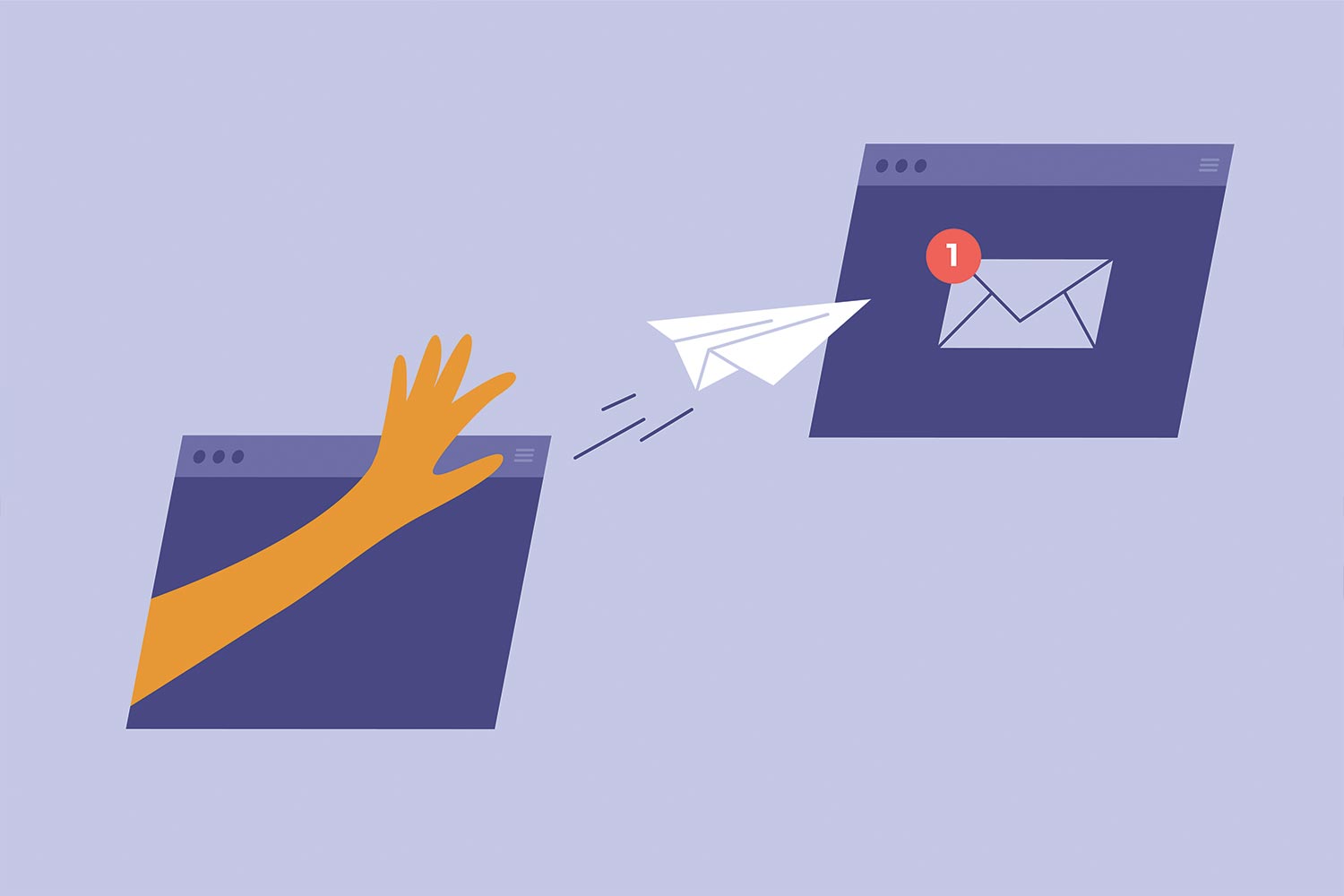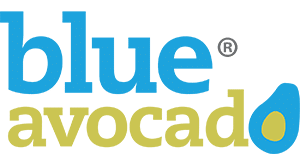Nonprofit Email Sign-Offs
Blue Avocado readers share their ways of signing off on nonprofit emails. The consensus is quick, and in keeping with the tone of the email.

How nonprofits conclude their emails
Dozens of Blue Avocado readers gave our writer Keiko Rosenstiel a lot to work with:
After hearing from so many Blue Avocado readers what is the right way to sign off on a nonprofit email, I’ve come to the conclusion that there is none! It’s a personal preference that must take into consideration who is at the receiving end.
It’s impractical to type “Keep your feet on the ground and keep reaching for the stars,” as Casey Kasem signed off his famous Top 40 radio show. However much I like the message, it’s too long! The consensus is… quick, and in keeping with the tone of the email.
Here’s some of what we heard:
“I wouldn’t consider using the closing Yours in Christ for a business email, it’s too politically incorrect for organizational behavior (unless your nonprofit is a Christian organization). Fondly is too personal and very often we have no personal connection to an email recipient. Yours Truly is over-used. How about a simple, Warm Regards?“
– Shari Bridges
Kathleen Dowd (Human Service Forum of Springfield, MA) agrees and frequently also uses Warmly. “In my signature as president of LEAGUE at AT&T, I took the lead from business colleagues in Europe and use Kind Regards” says Denise Hill. “I use Best Regards” wrote Linnea Klee (Children’s Council of San Francisco), but it seems a bit formal. I struggle with the other options.”
“I like to use Kind regards. Regards seems a bit short; Warm regards seems a bit too friendly. But I guess one can never be too kind.”
— Sue DeMarco of the Pancreas Foundation (Reader Joyce uses just “Kindly.”)
“Farewell. It’s short and impossible to misunderstand. Just as important, it cannot possibly give offense to anyone. It has no undertones, overtones, or hidden meanings.”
— Len in Warminster, UK
“For a number of years now, I have been signing off All the best; I know I am always happy when it comes back to me. Another upbeat one: Cheers.”
— Terri Forman of Peninsula Jewish Community Center in California
“I usually sign off e-mails with Take care — including my official e-mails to ministers etc. So far no one has complained.”
— Heike of Galway One World Centre, Ireland
“My current favorite—unknown how long it will last—is With Appreciation. I think of it as thanking them for taking time to communicate with me and sharing our ideas.”
— Tim Johnson of Denver
“I find that Thanks almost always seems to express what I want it to. It is not as formal as Thank you, but much better than thx (which I have seen too often).”
— Dave Cannard
“What nonprofit e-mailers should be sure to do is take advantage of the opportunity for a BRIEF tagline at the end of your auto-signature. This can be either your organization’s motto or a link to your website [or an upcoming event]. By the same token, I find the ‘personal favorite quote’ style of tagline to be unprofessional.”
— Cate Steane, Fesco Family Shelter, Hayward, CA (previous article about Cate)
Since emails DO have built-in automatic signature, what is appropriate there? But that’s another story. Thanks for sharing your thoughts… Keiko
You might also like:
- Insider Newsletters: An Easy Way to Keep Your Board in the Loop and Engaged
- Nonprofit Rebranding Strategies: Five Steps to Achieving a Successful Nonprofit Rebrand
- 8 Easy Ways to Grab More Attention for Your Small Nonprofit
- Five Signs Your Nonprofit is Ready to Reach a Bigger Community
- Perfect Together: How to Access Community Television for Your Nonprofit
You made it to the end! Please share this article!
Let’s help other nonprofit leaders succeed! Consider sharing this article with your friends and colleagues via email or social media.
About the Author
Articles on Blue Avocado do not provide legal representation or legal advice and should not be used as a substitute for advice or legal counsel. Blue Avocado provides space for the nonprofit sector to express new ideas. The opinions and views expressed in this article are solely those of the authors. They do not purport to reflect or imply the opinions or views of Blue Avocado, its publisher, or affiliated organizations. Blue Avocado, its publisher, and affiliated organizations are not liable for website visitors’ use of the content on Blue Avocado nor for visitors’ decisions about using the Blue Avocado website.







I like Yours truly. But I also like the personal trademark feel of an expression that few other still use. What’s wrong with 19th century? Tradition and good manners are related concepts. I say, "How do you do?" when meeting people. It is what I was taught in kindergarten (in the 1960’s).
I generally end e-mails with "Best," as in "All the best," or "Best wishes." It’s neutral, but upbeat, and most people take it well. Best, Deborah L. Sheetz (Debby), Top Fun Aviation Toy Museum
I generally end e-mails with "Best," as in "All the best," or "Best wishes." It’s neutral, but upbeat, and most people take it well. Best, Deborah L. Sheetz (Debby), Top Fun Aviation Toy Museum
My favorite sign-off is "Best Regards"
As to sign-offs, there are different tones for different occasions. On cold contacts, those addressed to me usually say "sincerely" or "regards." I tend to use "regards" most for cold contacts, but will often use "all good wishes" or "hope this helps" for those I know or when I’ve been asked for something. When there is a string of replies back and forth, most often no sign-off is used, and frequently without even a name. Hope this helps,
What’s the best way to sign off a non-profit e-mail? I always use . . .
Best wishes, Alan
neadonconsulting ltd. London
I think the younger folk, or maybe the young tech folk, sign off with "Best, So-and-So." Seems impersonal to me, but I’m old and I use "Ciao!" How ’80’s is that? 🙂
The best way to sign off any e-mail message, whether to a business colleague, a fellow volunteer, a prospective donor, or an aquaintance, is simply "Regards" or "Best regards." That formulation is polite, but without the unnecessary formality of "Yours truly" or even "Sincerely" that one would use in hard copy written communications. Above all, I would urge people (at least anyone over 21) to avoid those dreadful instant messaging formulations! Best regards, (Mrs.) Mical Atz Brenzel, Treasurer, Ragazzi Boys Chorus
Regards, Best regards, Best, David
These work and also seem to be gaining popularity. They are a cross between formal and informal, friendly and professional, and seem to fit email precisely because they are not standard in written correspondence.
"Regards" is my default for professional contacts; "Best regards" is for a closer friend or colleague, or for a warmer note (such as a thank-you) and "Best" works as a shorthand once the relationship is established, to distinguish from the generic "regards" especially in a long email chain or with a frequent correspondent.
Note that there is no research or convention behind these choices, just personal sensibility and experience.
Regards, Best regards, Best, David
These work and also seem to be gaining popularity. They are a cross between formal and informal, friendly and professional, and seem to fit email precisely because they are not standard in written correspondence.
"Regards" is my default for professional contacts; "Best regards" is for a closer friend or colleague, or for a warmer note (such as a thank-you) and "Best" works as a shorthand once the relationship is established, to distinguish from the generic "regards" especially in a long email chain or with a frequent correspondent.
Note that there is no research or convention behind these choices, just personal sensibility and experience.
The oft said statement "lucky you live in Hawaii" holds true for this topic. It’s "Aloha" of course – the ubiquitous and lovely word with so many meanings is totally appropriate as an email sign off – formal or informal. Sometimes with my closer colleagues it’s a "Mucho Aloha." Aloha, Kim
I consider "sincerely" an appropriate way to sign off. It is a refreshing way to sign off especially in this era when a soceity has been besieged by behaviours bordering on the sociopathic from robbery, insincerity, betrayal and lies without batting an eyelash. To sign off with the adverb "sincerely" means that my words that describe my actions are conveyed to the reader with sincerity. That is to say, I’ve written these words while conscious and in conscience. Translation: I take full responsibility of what I wrote, did, or will do.
Sincerely, Dr. Christine Gabali, IASE (International Alliance in Service and Education)
I do "Cheers" with people I know enough. For all others, "Regards" works for me.
I do "Cheers" with people I know enough. For all others, "Regards" works for me.
What’s wrong with "Yours sincerely" or just "sincerely"? If it’s a donor thanks letter I usually put a short handwritten thanks on there too. Have people lost the art of letter writing, I wonder, in these days of email?
Nothing is terribly wrong with the traditional “Sincerely,” but they do feel a little stale and well, insincere. However, this article is specifically about emails, not donor letters. I’m sure many of us still include a handwritten note for donors, or at least donors over a certain gift amount.
I once saw a letter from George Lucas with the sign off – "May the force be with you." I liked the sentiment, but know that you can only get away with it if you’re actually the person who created that line in the first place! Maybe we need something original. Courage –
I am the Director of Volunteers for a low-income senior living community and I spend a lot of time answering emails of one kind or another. One of my favorites especially for someone new I am responding/writing to is "kind regards." A couple of others I have used or have seen others use include "warmly" "take care" and "kindly." I almost always put a thank you somewhere towards the end of a note as well. I think that has just become habit. Thanks very much. 🙂 Kindly, Alisa Dichter, Director of Volunteers, Lytton Gardens
I am partial to a few: "Best regards," Best, Warmly.
I’ve been quite comfortable in using "My best". It’s short, simple and to the point My best, Mel
I’ve been quite comfortable in using "My best". It’s short, simple and to the point My best, Mel
From Lisa…….(non-profit director)
What about…..we are in a depression, please send money ASAP! Thanks in advance!
From Lisa…….(non-profit director)
What about…..we are in a depression, please send money ASAP! Thanks in advance!
When we send follow up thanks to donors to our pet rescue non profit. we sign off with,
Apurrrrrrrrrrrrrreciatively,
Julie
Development Director
As a museum director and a history research consultant, the sign-off I frequently use is "Historically Yours".
I copied it from a local artist Albert Solon (long deceased), a pioneer in tile and ceramics who used to sign his letters, "Ceramically Yours". Thanks for the inspiration, Al.
April Halberstadt
As an Australian, where informality is pretty normal, I usually use ‘Cheers’. Of course, if relevant I thank people for whatever in the body of the message! Bob Holderness-Roddam
I work for a friendship centre so I sign off "In friendship". All other correspondences I use "Sincerely" for its simpicity. In friendship, Marianne
I am a bit old fashioned, but I actually type my closing and my "signature" on every message . . . leaving the auto signature to insert ONLY my contact info. It only takes a moment to type in the closing and name approropriate to each message and recipient – and much more personal. Besides, I find it strange when someone merely forwards something (with no other message) but the auto signature tells me of their warm thoughts . . .
Definitely depends on the person receiving the email and the general tone of the email. I often use "Best to you" as it reflects a cordial wish of good things specifically to that person, though a bit less formal. Sometimes when I’m not feeling as warm, or in need of a more formal close, a good old fashioned "Sincerely" always works.
I’ve worked at non-profits where I’ve argued against allowing individual employees to put their favorite quote in their e-mail signature block. Too often, the quote makes clear the person’s views on some political issue or expresses a sense of humor that the recipient might not appreciate. When you’re sending an e-mail as a representative of an organization, I don’t think you can be too careful. If the organization has a tagline, I’d stick with that.
I’ve worked at non-profits where I’ve argued against allowing individual employees to put their favorite quote in their e-mail signature block. Too often, the quote makes clear the person’s views on some political issue or expresses a sense of humor that the recipient might not appreciate. When you’re sending an e-mail as a representative of an organization, I don’t think you can be too careful. If the organization has a tagline, I’d stick with that.
I copied my favorite closure from a lovely note I received from Laurance S. Rockefeller, as a response to my thank you letter to him for receiving his fellowship to Harvard Business School. That was 35 years ago. It still works for me.
Kindest Regards, Susan Haberland
very good article thank you….
WOW all really great ideas!! I always put Kind Regards – untill I get to know you better or feel its appropriate, then I say
"KEEP SMILING – SUZIE
WOW all really great ideas!! I always put Kind Regards – untill I get to know you better or feel its appropriate, then I say
"KEEP SMILING – SUZIE
I am a “Best Regards” type of guy. I think its probably one of the better sign offs and can be used in a multitude of situations. Thanks for this article, it was a great read. Another good one which I just read through is: https://www.zippysig.com/best-regards-best-wishes-kind-regards-warm-regards-which-one-to-use
Since our service areas are in different countries, we have been using “Asante Sana, Gracias, Thank you” in our sign off along with a link to the website and social media, but reading through the thoughts and ideas here, I also like “With appreciation”
If your information is confidential what do you say after signing off?
Is this appropriate for all business email? CONFIDENTIALITY NOTICE: All of the information used in this e-mail message is privileged and confidential and it is intended for the use of the individual and or entity named above. Any legal action resulting from the dissemination, distribution or copying of this e-mail communication to unlisted persons becomes the sold responsibility of the original receiver. If you received this e-mail communication and you are not the original receiver listed please note that if you choose to share this information you are legally responsible for its dissemination. Thank You for Your Support!